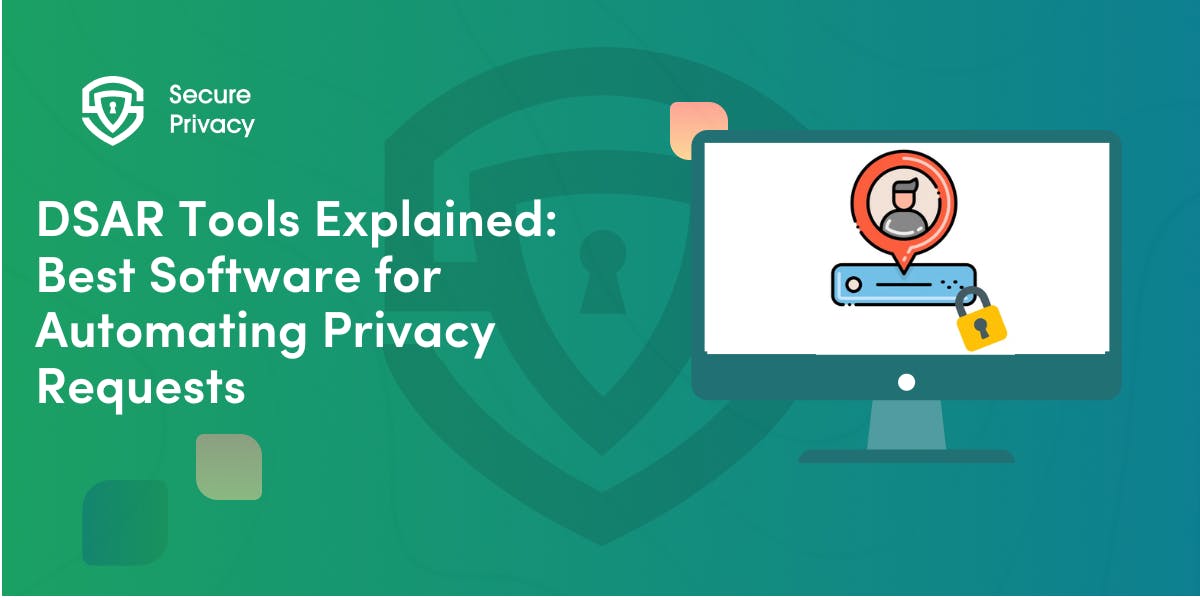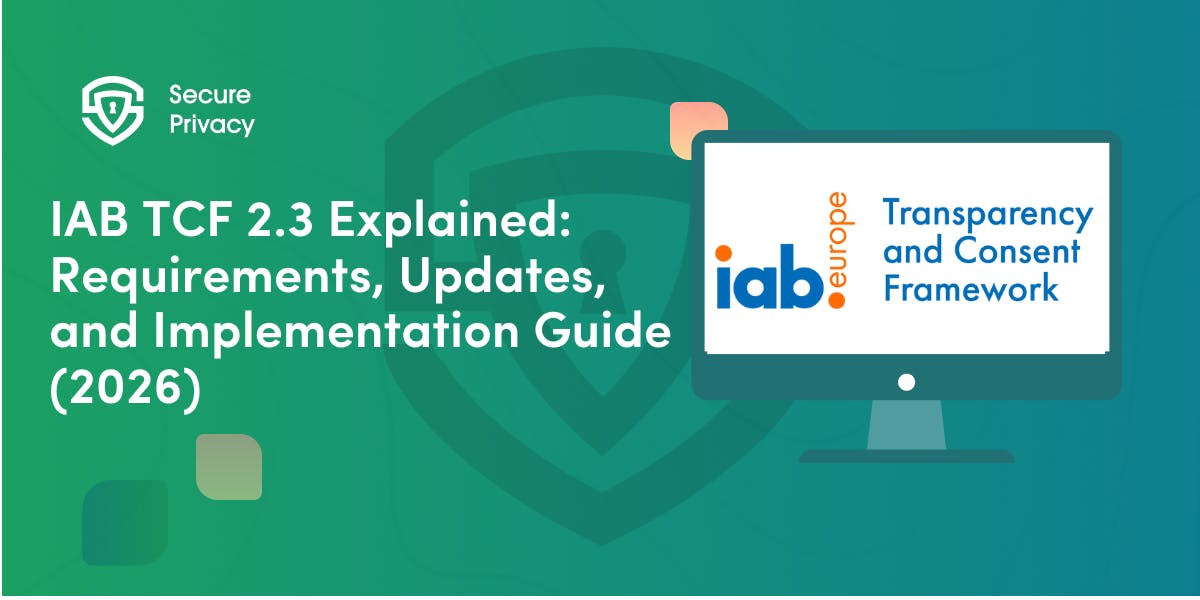The Rise of Zero-Party Data in Consent Management
Are you struggling to balance privacy compliance with personalized customer experiences? As traditional data collection methods face mounting challenges, a new approach is gaining traction among forward-thinking organizations. Zero-party data has emerged as the strategic solution that respects consumer privacy while delivering the insights businesses need.
Understanding Zero-Party Data in the Modern Data Landscape
Zero-party data represents a fundamental shift in how businesses think about customer information. Unlike data that's collected behind the scenes, zero-party data comes directly from consumers who intentionally and proactively share it with your company. This willingness to share creates a foundation of transparency that naturally aligns with modern consent requirements.
What makes zero-party data different from other data types you might be collecting? Let's break it down:
Zero-Party vs. First-Party vs. Third-Party Data
While first-party data comes from direct customer interactions with your website, apps, or services, it's often collected passively as users engage with your digital properties. Zero-party data requires deliberate action—consumers actively volunteer information, usually with a clear understanding of how you'll use it to improve their experience.
Third-party data, gathered from external sources without direct user involvement, faces increasing restrictions in today's privacy-conscious environment. Zero-party data sidesteps these issues entirely through its consent-first approach.
The information consumers share proactively can be incredibly valuable: purchase intentions, personal preferences, how they wish to be recognized by your brand, and contextual information about their needs. This data typically comes through direct channels such as:
- Preference centers
- Surveys and questionnaires
- Account creation forms
- Profile updates
- Interactive experiences like quizzes
This distinction becomes increasingly important as privacy regulations evolve. Zero-party data represents a consent-first approach where information sharing begins with consumer agency rather than organizational capture—creating more accurate, relevant, and trustworthy customer experiences that respect individual privacy choices.
Regulatory and Technological Drivers Behind Zero-Party Data Adoption
Why is zero-party data gaining such momentum? A perfect storm of regulatory pressures and technological changes is fundamentally reshaping the data landscape, pushing organizations toward more transparent, consent-based approaches.
The Regulatory Landscape
Privacy regulations worldwide have established increasingly stringent requirements for data collection and management. The General Data Protection Regulation (GDPR) in Europe and the California Consumer Privacy Act (CCPA) in the United States have set high standards for consent practices, emphasizing the need for explicit permission, transparency, and user control.
More recently, India's Digital Personal Data Protection Act (DPDPA) of 2023, now updated towards 2026 has further strengthened the global trend toward robust data protection frameworks. The DPDPA emphasizes explicit consent requirements, data principal rights, and strict data management practices across all industries.
These regulatory developments have created a global environment where traditional, passive data collection methods face increasing scrutiny and limitations. Organizations that fail to adapt risk substantial penalties and reputational damage.
The Technology Shift
Alongside regulatory changes, major technological shifts are eliminating long-standing data collection mechanisms. The most significant of these is Google's planned phase-out of third-party cookies in Chrome, following similar moves by Apple's Safari (Intelligent Tracking Prevention) and Mozilla's Firefox (Enhanced Tracking Protection).
Industry experts describe this as "probably the most critical move ever in the history of digital advertising." With these changes, your organization faces the imminent loss of tools you've likely relied on for tracking, targeting, and measuring digital engagement.
Evolving Consumer Expectations
These developments are occurring against a backdrop of growing consumer awareness about data privacy. Today's consumers are increasingly conscious of how their information is collected and used, demanding greater transparency and control. Research shows that 37% of consumers not only welcome but prefer personalized services based on data they've explicitly shared—indicating a growing preference for consent-based personalization over tracking-based approaches.
This combination of tightening regulations, technological disruption, and evolving consumer expectations creates powerful incentives for your organization to pivot toward zero-party data strategies. Zero-party data offers a path forward that addresses regulatory requirements through its inherently consent-based nature while providing the insights you need for personalization, even as traditional data sources disappear.
The Strategic Value of Zero-Party Data in Consent Management
Zero-party data isn't just about regulatory compliance—it offers significant strategic advantages that can transform your organization's approach to customer relationships. When you build your consent management strategy around zero-party data, you establish transparency and trust from the very beginning.
Quality That Outperforms Traditional Data Sources
One of the most compelling benefits of zero-party data is its exceptional quality. Because this information comes directly from consumers through intentional sharing, it tends to be highly accurate and relevant. Zero-party data provides your business with direct insights into customer preferences and intentions—insights you can trust.
This accuracy stands in sharp contrast to third-party data, which is frequently described as "out of date and unreliable" and "sourced in ways that are hazy." When you base your personalization and marketing decisions on zero-party data, you reduce the risks associated with inaccurate information while creating more meaningful customer experiences.
Simplifying Your Compliance Efforts
From a consent management perspective, zero-party data significantly streamlines compliance. Since consumers proactively provide this information with an understanding of how you'll use it, you'll face fewer challenges in demonstrating valid consent to regulators.
This approach helps your business "create more relevant experiences for customers without the common pitfalls of first-party data consent." As privacy regulations continue to evolve, the clear consent trail associated with zero-party data provides greater legal certainty and reduces your compliance risk.
Building Stronger Customer Relationships
By explicitly asking for information rather than collecting it behind the scenes, your organization demonstrates respect for consumer privacy and agency. This transparency enhances brand trust—an increasingly valuable asset in today's privacy-conscious market.
Research indicates that this trust translates directly into business value. Organizations that prioritize privacy-focused marketing see measurable improvements in both consumer engagement and return on investment. When customers feel respected, they're more likely to engage with your brand and remain loyal over time.
Industry Momentum
The shift toward zero-party data is gaining significant momentum across the marketing industry. According to The Future of Marketing report by eConsultancy:
- 55% of marketers expect zero-party data to become more important over the next two years
- 89% of marketers believe privacy should be a key factor in data strategy
- 77% are shifting their focus from quantity to quality in customer data collection
These statistics highlight how zero-party data aligns with broader industry trends toward more ethical, quality-focused data practices. Forward-thinking organizations are already making this pivot, recognizing that the future of effective marketing lies in consensual data relationships.
Implementing Zero-Party Data Collection: Best Practices and Strategies
Successfully implementing zero-party data collection requires thoughtful strategies that balance your organizational needs with an exceptional consumer experience. The foundation of effective collection is creating compelling value exchanges that motivate consumers to voluntarily share their information.
Effective Collection Methods
Several approaches have proven effective for gathering zero-party data within consent management frameworks:
Surveys and Questionnaires: Direct means of collecting specific information about preferences and intentions, particularly effective when kept brief and focused.
Preference Centers: Enable consumers to customize their experience by explicitly indicating their interests, communication preferences, and privacy choices.
Account Creation and Profile Updates: Natural opportunities to gather information in exchange for personalized services, especially when benefits are clearly communicated.
Interactive Content: Quizzes, assessments, and configurators can make data collection engaging while providing immediate value to consumers.
Feedback Mechanisms: Create two-way dialogues that generate insights while demonstrating responsiveness to consumer input.
Key Best Practices
To maximize both participation and compliance, follow these best practices for zero-party data collection:
Transparency First: Clearly explain why you're collecting specific information and how it will be used to benefit the consumer. Vague descriptions undermine trust and reduce participation.
Meaningful Value Exchange: The benefits of sharing must be significant enough to motivate participation while aligning with consumer expectations. Different segments may respond to different incentives.
Simplicity in Design: Collection methods should be designed for ease of use to reduce friction in the sharing process. Complex or lengthy forms discourage participation.
Honor Preferences Consistently: Use the data only in ways that align with stated purposes and demonstrate respect for the preferences consumers have shared.
Creating the Right Incentives
Understanding what motivates different consumer segments is crucial for creating effective incentives. Some consumers respond to the promise of more personalized experiences, while others might be motivated by exclusive content, special offers, or enhanced functionality.
Mediahuis, a major European publisher, successfully built a base of 4.4 million registered users by developing the right value exchange, allowing them to create a significant audience-based advertising business. Their experience demonstrates that with the right approach, you can achieve substantial scale in zero-party data collection.
Throughout implementation, maintaining compliance with evolving regulations remains essential. Ensure your consent collection mechanisms meet the requirements of applicable privacy laws, including providing clear options to opt out and honoring data subject rights. Giving all users the right to download or delete their data—even when not legally required—builds trust while supporting regulatory compliance.
Zero-Party Data Across Industries: Use Cases and Applications
The adoption of zero-party data within consent management frameworks varies across industries, with each sector finding unique applications that align with their specific business models and customer relationships.
Media and Publishing
In the media and publishing industry, zero-party data has become particularly valuable as third-party cookies disappear. Companies like Mediahuis have leveraged zero-party data collected from registered users to create targeted advertising capabilities that maintain revenue streams despite changing privacy regulations.
Their success speaks for itself: audience campaigns grew to represent 27% of total ad revenue, with clickthrough rates 26% higher than non-targeted campaigns. These results demonstrate the commercial value of consent-based data approaches that respect user privacy while delivering performance.
Retail and E-commerce
The retail and e-commerce sector has found zero-party data invaluable for personalizing the shopping experience while respecting privacy preferences. By collecting information about style preferences, size information, and shopping intentions, retailers can create tailored product recommendations that drive conversion and loyalty.
The explicit nature of this data collection aligns perfectly with consent requirements while delivering the personalization consumers expect from digital shopping experiences. Retailers who implement zero-party data strategies can reduce returned items, increase average order value, and build stronger customer relationships.
Financial Services
In the financial services industry, zero-party data supports personalized financial guidance while maintaining compliance with stringent industry regulations. Banks and financial institutions can collect information about financial goals, risk tolerance, and investment preferences directly from customers, using this information to provide tailored advice and product recommendations.
The highly regulated nature of financial services makes the clear consent trail of zero-party data particularly valuable, reducing compliance risks while enabling personalization that helps customers achieve their financial objectives.
Healthcare
Healthcare organizations are finding zero-party data essential for balancing personalization with stringent privacy requirements under regulations like HIPAA. By collecting explicit preferences about communication channels, health interests, and wellness goals, healthcare providers can deliver more relevant information and services while maintaining clear documentation of consent.
This approach is particularly important given the sensitive nature of health information and the high standards for consent in healthcare contexts. Zero-party data strategies help healthcare organizations improve patient engagement while minimizing privacy risks.
Across these diverse industries, zero-party data supports a common goal: building direct relationships with customers based on transparency and mutual value. A strategy built around zero-party data can help organizations thrive in the new digital landscape, allowing them to build more direct relationships that benefit both the business and its customers.
Challenges and Considerations in Zero-Party Data Adoption
Despite its considerable benefits, implementing zero-party data within consent management frameworks presents several significant challenges that your organization must address.
Motivating Participation
The most fundamental challenge is motivating sufficient participation from consumers. Collecting zero-party data is "often more challenging" because "it's contingent upon the willing participation of the user." Your organization must develop compelling value propositions that overcome consumer reluctance and incentivize active sharing.
Scaling Collection Efforts
While first-party data can be collected passively from all users who interact with your digital properties, zero-party data requires active participation from each individual. This can create coverage gaps where you have rich data about some customers but limited insights about others.
Effective strategies require "data and machine learning to intelligently extrapolate to a broader audience from a base of logged-in users." Your organization must find ways to derive value from partial data while continuing to expand zero-party data collection.
Maintaining Data Currency
Zero-party data may become outdated unless regularly refreshed. Unlike behavioral data that updates automatically as users interact with digital properties, preferences and intentions shared explicitly may change over time.
Developing strategies for prompting updates without creating fatigue requires careful balance—collecting enough information to maintain relevance while respecting user time and attention.
Integration with Existing Systems
Many organizations have built their data infrastructure around passive collection methods. Pivoting to zero-party approaches may require significant changes to data models, collection mechanisms, and utilization practices.
Investing in the technical capabilities needed to collect, store, manage, and activate zero-party data effectively within your consent management framework is essential for success.
Maintaining Trust
Perhaps most importantly, organizations must maintain trust through responsible data stewardship. To maintain customer trust, you'll need to give all users the right to download or delete their data, honoring the implicit contract established when consumers share information.
Using data only in ways that align with stated purposes and respecting privacy preferences consistently builds the foundation for ongoing participation in zero-party data initiatives.
The Future of Consent Management: Zero-Party Data Trends and Predictions
Looking ahead, zero-party data will become increasingly central to consent management as privacy regulations tighten and traditional data sources diminish. Industry research shows this trend is already underway, with 55% of marketers expecting zero-party data to become more important over the next two years.
AI and Machine Learning Integration
The integration of artificial intelligence and machine learning with zero-party data collection represents a significant trend that will shape future consent management practices. Advanced analytics can help your organization derive greater value from limited zero-party data sets by identifying patterns and extending insights to broader audiences.
AI can also personalize the data collection experience itself, presenting different questions based on previous interactions to create more engaging and efficient collection processes.
Standardization and Interoperability
Interoperability and standardization are likely to become increasingly important as zero-party data strategies mature. There's growing interest in "standardized consent frameworks that can operate across different organizations and sectors," which would simplify compliance while creating more consistent experiences for consumers.
Such standards would establish common language, technical protocols, and interoperability approaches for consent management, making it easier for consumers to exercise control over their data across the digital ecosystem.
Continuous Consent Models
The concept of "continuous consent" is emerging as an evolution beyond static, one-time permission models. This approach recognizes that preferences and comfort levels change over time, requiring ongoing dialogue rather than point-in-time decisions.
Future consent management systems will likely incorporate more dynamic models that allow preferences to evolve alongside changing consumer priorities and organizational offerings, creating more nuanced and adaptable consent relationships.
Strategic Elevation
As zero-party data becomes more central to organizational strategies, consent management will evolve from a purely compliance-focused function to a core component of business strategy. Organizations that recognize the competitive advantages of consent-based data relationships—higher quality insights and stronger customer trust—will position zero-party data not merely as a regulatory response but as a fundamental business asset.
Conclusion
The rise of zero-party data represents a transformative shift in consent management practices. As traditional data collection methods face increasing limitations, zero-party data offers a path forward that aligns with privacy regulations while providing the insights your organization needs for personalization and customer understanding.
The voluntary, transparent nature of zero-party data creates a foundation of trust that strengthens customer relationships while simplifying compliance efforts. Despite implementation challenges, organizations across industries are recognizing the strategic value of zero-party data within their consent management frameworks.
Looking ahead, we can expect zero-party data to become an increasingly central component of consent management as organizations develop more sophisticated approaches to collection, analysis, and activation. This shift represents not merely a tactical adjustment to regulatory pressures but a fundamental reimagining of the relationship between organizations and consumer data—one built on explicit consent, mutual value, and ongoing trust.
As privacy regulations continue to evolve and consumer expectations increase, organizations that successfully implement zero-party data strategies will be well-positioned to thrive in the privacy-first era. Is your organization ready to make this strategic pivot?
Get Started For Free with the
#1 Cookie Consent Platform.
No credit card required

What is Cookie Consent? A Quick 2026-Ready Glance
Your website loads. Cookies track users. But without proper cookie consent, you're violating GDPR — risking fines up to €20 million or 4% of global revenue. Cookie consent is the legally required mechanism by which websites obtain explicit user approval before deploying non-essential tracking technologies. This requirement stems from GDPR Article 4(11) and the ePrivacy Directive, mandating that consent must be freely given, specific, informed, and unambiguous.
- Legal & News

DSAR Tools Explained: Best Software for Automating Privacy Requests
You're drowning in data subject access requests. Manual searches through dozens of systems miss regulatory deadlines and expose organizations to fines starting at $2,500 per violation. The solution? DSAR tools — purpose-built software that automates the entire process of responding to data subject access requests, from intake to delivery.
- Legal & News

IAB TCF 2.3 Explained: Requirements, Updates, and Implementation Guide (2026)
Your ad revenue dropped 40% overnight. Google stopped bidding on your inventory. Your DSP partners flagged your traffic as non-compliant. The culprit? An outdated TCF 2.2 consent string after the February 2026 enforcement deadline.
- Legal & News
- Cookie Consent

